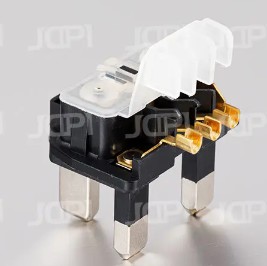The British plug is also known as the BS (british standard) plug, which refers to the power plug with the British Standard as the reference guideline. British plugs can be divided into assembled and injection-molded plugs. The assembled British plugs are detachable and can be freely customized, while the injection-molded plugs are generally integrated and cannot be disassembled. Common British standards on the market include BS1363, BS546, BS5733, etc., which stipulate the standards that a product must follow to enter the UK.
The British plug is not only suitable for the United Kingdom itself, but other countries have also extended its standard for historical reasons (such as being a British colony), such as Nigeria, Tanzania, India, Pakistan, Malaysia, Singapore, Maldives, Hong Kong and other countries area.
The British plug has three square pins, with "E, L, N" three poles, E (Earth) is the ground wire, L (Live) is the live wire, and N (Null) is the zero wire, following the "left zero right". In the middle of the fire", generally speaking, there will be a mark on the plug. The British plug is also marked with the corresponding current and voltage values, and the British plug with a fuse will be marked with the word "FUSED". The three copper pins of the British plug have the same spacing from top to bottom, left and right, and its L-pole and N-pole pins are covered with glue for safety protection.
The British plug can be used as a matching electrical appliance and can be used in industrial, domestic, commercial and other places. In particular, when British plugs are exported to the United Kingdom, BS certification is required. If they are exported to other countries such as India, the certification requirements are not strict. In addition, some countries have local protectionism, and British plugs need to be certified by their own countries when exporting. For example, Saudi Arabia also uses British plugs, but when we export plugs to Saudi Arabia, we also need Saudi Arabia's certification SASO.



 English
English Deutsch
Deutsch














